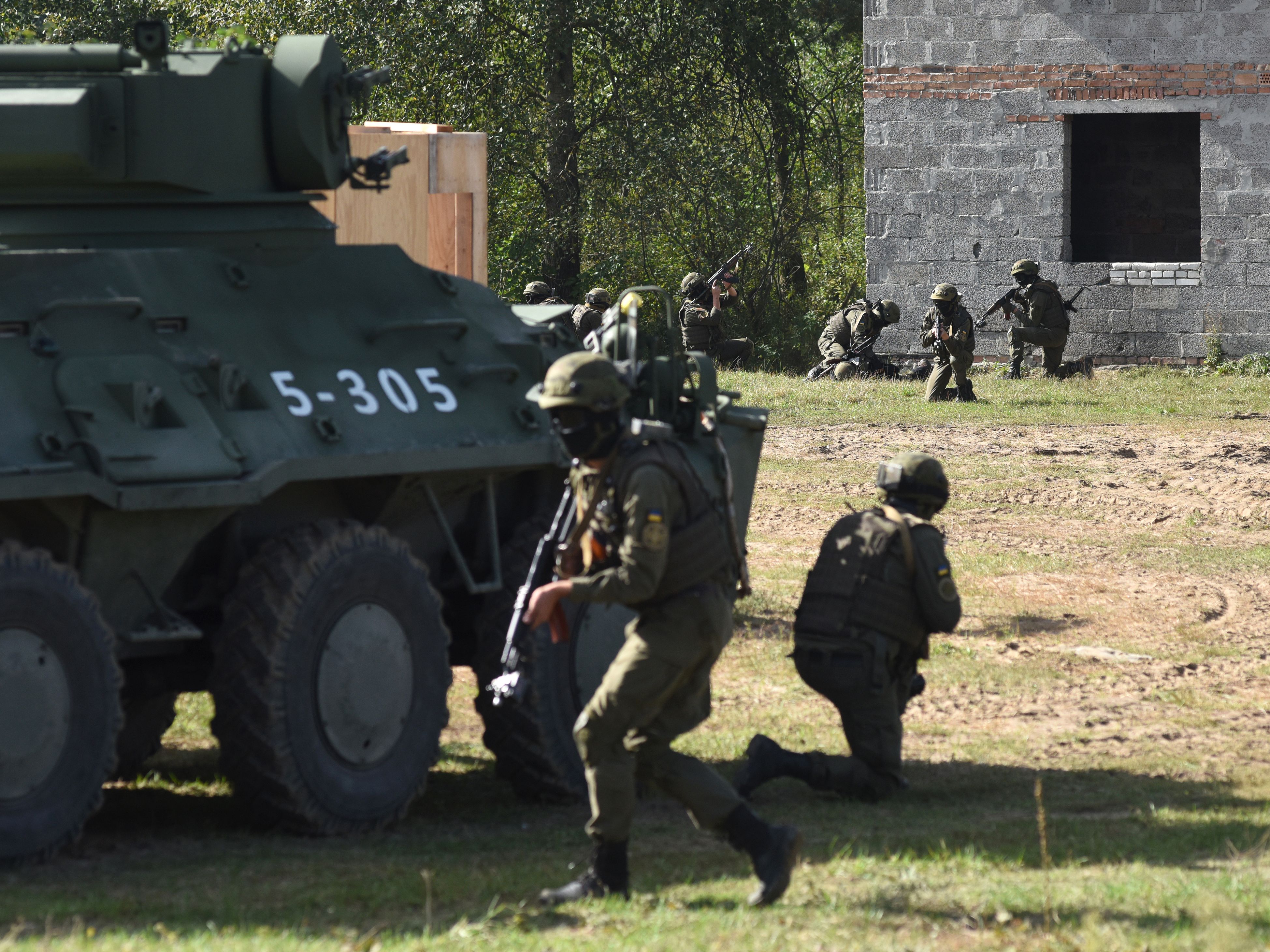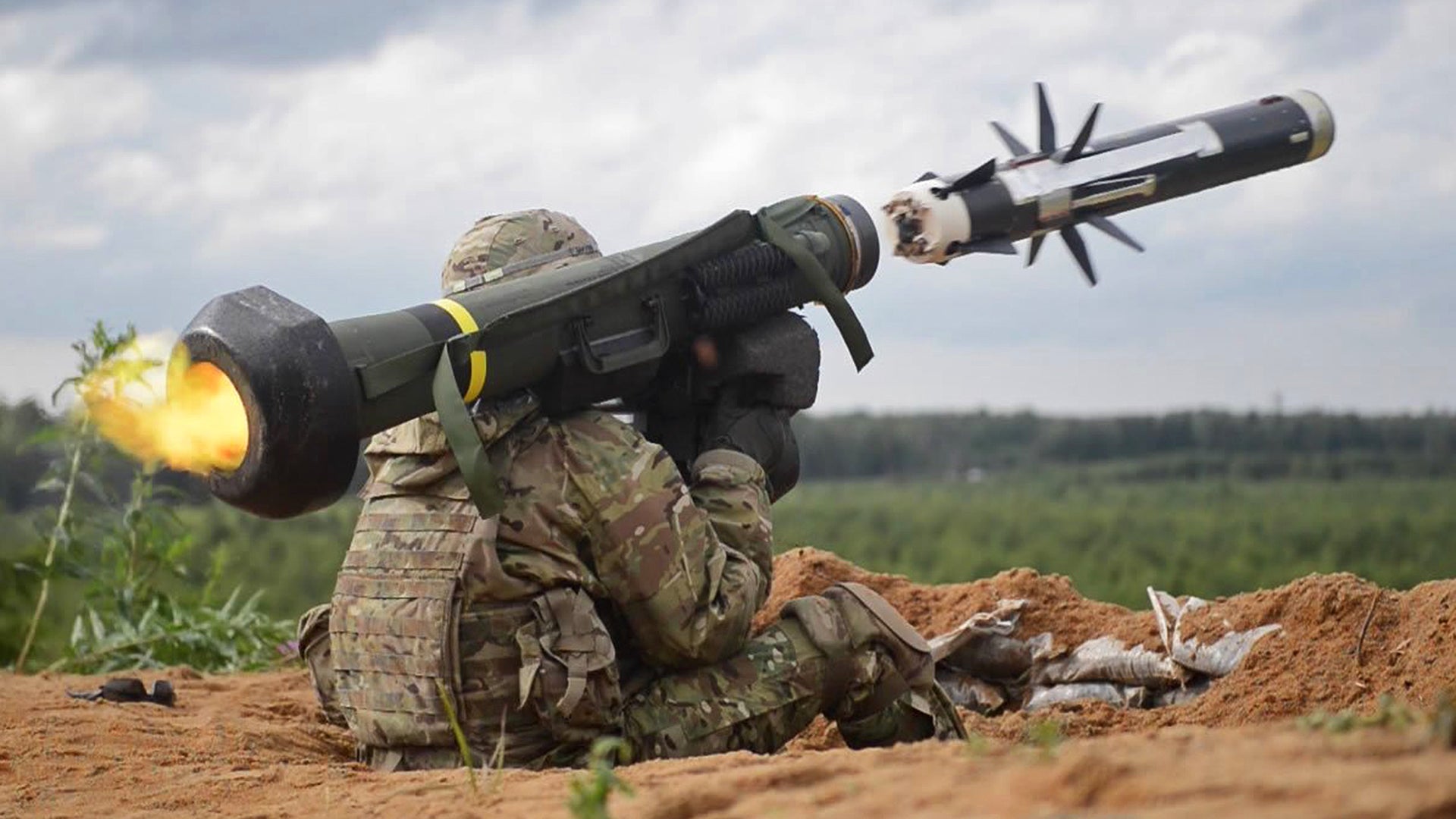Nearly four years after Russia’s initial incursion into Ukrainian territory and the shadow war that sparked off in Eastern Ukraine shortly after, the U.S. State Department cleared Ukraine to purchase FGM-148 Javelin advanced anti-tank missiles.
According to Defense News the $47M deal includes 210 Javelin missiles, 37 command launch units (CLU) and two spares, as well as training, logistics and support. This would be the first time the United States has agreed to provide advanced lethal weaponry to Ukraine since the conflict began.
The Javelin, although known largely as an anti-tank missile packing a high-explosive anti-tank (HEAT) round that can penetrate the latest armor, is really a multi-role shoulder-launched missile system capable of taking out everything from heavy armor, to troops hiding behind cover, to low and slow flying aircraft. Its reusable command launch unit can also be used independently as a thermal imaging surveillance system which can drastically improve austerely equipped troops’ ability to surveil their surroundings, especially at night. It features wide-angle viewing modes as well as a zoom mode up to 12X.

The 50lb missile and CLU apparatus can be used against targets in two modes. The first is direct attack, the missile flies directly at its target in a relatively straight line. The other is a top-down attack, which is really useful for obliterating tanks where they are the least armored and for taking out enemy formations hiding behind cover. The missile is fire and forget, and will stay locked onto a moving vehicle autonomously as it makes its attack.
The standard Javelin’s range is only about a mile and a half with the latest versions adding about a mile to that range. So even though it does provide a standoff capability to some degree, it may necessitate getting within range of enemy weapons in order to deploy it. But this is less of a limiting factor for combat in urban environments.
Javelin capability doesn’t come cheap, though. Each Javelin missile runs roughly $80k, and the reusable Launch Control Units cost about double that. But especially for troops using older equipment, with only rudimentary air cover and night fighting abilities, the Javelin provides something of an asymmetric advantage, one that could be incredibly useful when it comes to targeting separatist vehicles and groups of fighters in Eastern Ukraine.

While the world has largely turned its gaze to other conflicts, the fighting between government forces and Russian backed separatists in Eastern Ukraine’s Donbas region has raged on with sporadic levels of intensity. The use of heavy armor has been banned from the fight according to various accords that have proven to be flimsy at best, engagements continue with these vehicles. Just recently a video showing Ukrainian troops taking out an armored fighting vehicle surfaced on the net. The weapon used was likely a guided anti-tank munition like the Ukrainian Skif and the vehicle was said to have been on a reconnaissance mission in violation of deescalation agreements.
In the past, the U.S. has only allowed certain defensive systems, utility vehicles, and support supplies to be exported to Ukraine. This has included small drones, Humvees, counter-battery radars, and everything from bed rolls to medical supplies. Training has been the largest form of assistance the U.S. has offered the embattled country, and it has benefited from American intelligence and strategic reconnaissance support over the area as well. But as for sending any “offensive weaponry” Kiev’s way, that has been strictly banned.
This has enraged some in congress who believe the U.S. should supply far more deadly weapons capabilities to Ukraine in an effort to counter Russian aggression, and even possibly a wholesale invasion of Eastern Ukraine. The Trump Administration has reviewed the Obama era policy and has decided to move forward with recommendations of arming the Ukraine government with more potent weapons, the FGM-148 being at the very top of the list.

This announcement comes as tensions between Moscow and Washington have skyrocketed in recent days. Just today Vladimir Putin gave an ominous, rhetoric-filled speech that showcased Russian weapons concepts that are claimed to be in developed and will supposedly make it impossible to stop a Russian nuclear attack on the United States. This came after America’s Nuclear Posture Review and overall future military strategy ordered a refocus on countering peer state competitors—chiefly Russia and China. These white papers included recommendations to the fielding new U.S. nuclear delivery systems as well, although none as exotic as those Putin touted as being under development in Russia.

Congress now has to approve the sale, which should happen, before the weapons can begin arriving at Ukrainian Army units. We’ll have to wait to see what else the Trump Administration is willing to furnish Ukraine with when it comes to heavy arms, and most importantly, we will have to see how Russia treats this shift in policy.
There is no doubt that Moscow will label it a major provocation, but just what military moves the Russians may make in response to it will have to be seen. The chances of something of a proxy arms race is possible, but until the missiles start being used we won’t know for sure what geopolitical impact their presence on the battlefield may have beyond a tactical one.
Contact the author: Tyler@thedrive.com
